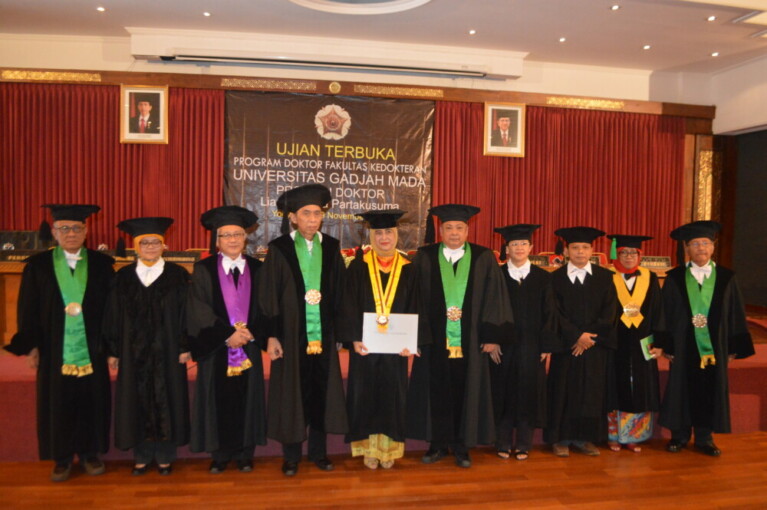
Tuberculosis Multi Drug Resistant (TB-MDR) became world’s serious health problems, including for Indonesia. WHO 2013 data mentioned there were 480 cases of new TB patients that are resistant to drugs. Indonesia’s Health Ministry data in 2011 predicted the new TB-MDR 8,900 patients each year or 2 percent of new TB case.
“Indonesia is a country with TB case at no.8 of 27 countries with high burden of TB-MDR,” said dr. Lia Gardenia Partakusuma, on Wednesday (9/11) in her doctoral promotion at Faculty of Medicine UGM.
The supporting director of Harapan Kita Hospital in Jakarta said efforts for TB mitigation and prevention as well as policy and system development are much needed to achieve TB-elimination by 2035. Giving diagnosis onTB, whether in Indonesia and most countries, is done conventionally, for example BTA and solid culture that take a longer period and low sensitivity under 50%.
“The solid culture results which is at least more than 2 weeks have caused the number of bacteria in the body grow more,” she said.
Lia explained since 1993 this method was used by a great deal of research on TB contraction surveillance. This method can reduce the difficult technique and shorten the time. But TB biomolecular surveillance has not been taken for national mitigation.
That explains Lia conducting research that combined lab epidemiology molecular methods and GIS analysis to know the genotype situation of M.tuberculosis in TB-MDR patients in Indonesia, especially in the western part, using 59 samples of isolate of TB-MDR patients at RSUP Persahabatan hospital.
“The biomolecular test showed that the secondary TB-MDR was due to non-compliance treatment in men, which is twice as high as in women,” she said.
Other results are 25% of patients are from Jakarta, 36% from Greater Jakarta and 39 percent from West Indonesia. Domination of Beijing strain in surveillance method of MIRU-VNTR with GIS at isolate TB-MDR in various parts of West Indonesia. These have a tendency 2.6 higher than MDR (+) in patients that are not only resistant to rifampicin and INH, but also in OAT line one or line two.
“As high as 47.1 percent of patients suffer from TB-MDR with the Beijing strain,” she said.
Seeing this condition, Lia sees the need for regular epidemiological molecular surveillance in a population according to international standard. This is important to do to prevent TB transmission. Use of GIS spatial analysis is also important to know the spread of new and old MDR cases, MDR, and MDR (+), and spread of Beijing and non-Beijing spreads in various parts of Indonesia.


